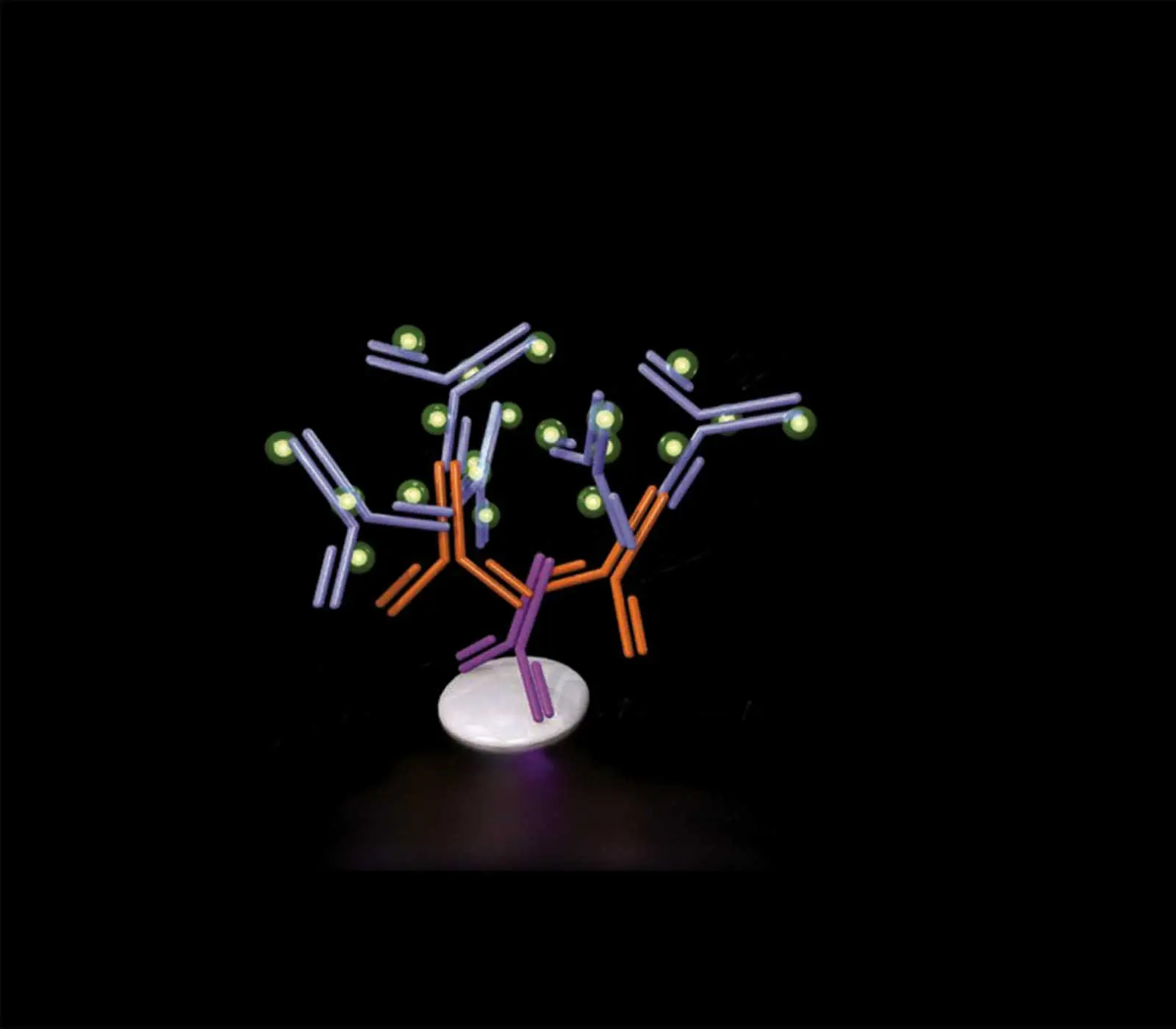Immunofluorescence Workflow
With over 40 years of research, development, and manufacturing experience Vector Laboratories has acquired considerable expertise in the production of immunofluorescence reagents. Our extensive range of fluorescent reagents and mounting media accommodates a variety of experimental designs and levels of signal amplification.

Slide Preparation
- Maximize tissue section retention and adherence on glass slides.
- Demarcate and isolate individual sections to reduce reagent use or for discrete treatment.

Antigen Retrieval
Increase tissue antigenicity (“immunoreactivity”) in aldehyde-fixed preparations with defined pH and salt solutions. The combination of aldehyde fixation (e.g., formalin) and heat exposure from the paraffin-embedding process can make epitopes inaccessible to detection. During antigen retrieval, tissues are treated with a combination of buffered solutions and high temperature, which causes conformational changes in the proteins that expose antigens for detection.

Quench / Block
Reduce or eliminate unwanted background (non-specific) staining on tissue sections and cell preparations using a blocking solution. Non-specific staining can result from endogenous enzyme or tissue elements, including endogenous enzyme activity, presence of Fc receptors, or interactions of detection reagents with tissue or cell proteins and other macromolecules. Choose a blocking solution based on the results of negative control sections.

Primary Antibody / Lectins
Identify and localize the target protein antigen or glycoprotein moiety in cells or tissue preparations using specific validated markers. When choosing a primary antibody or lectin, consider the tissue species and tissue preparation method (e.g., fixation) to ensure specific binding of your target.

Secondary Antibody
Select highly purified and optimally conjugated detection reagents to meet assay conditions, such as primary antibody species, tissue species, target abundance, and ease of use (concentrated or ready-to-use formats).

Tertiary Reagent
If needed, increase the sensitivity of detection to visualize weakly or transiently expressed, upregulated, or unknown (e.g., gene knock-in studies) antigens.

Autofluorescence Quencher
Remove unwanted fluorescence in tissue sections due to aldehyde fixation, red blood cells, and structural elements such as collagen and elastin.

Counterstain / Mount
Retain and preserve fluorescent signal intensity, with or without optional counterstain, to increase microscopy exposure times and archive for future imaging and reference requirements.

